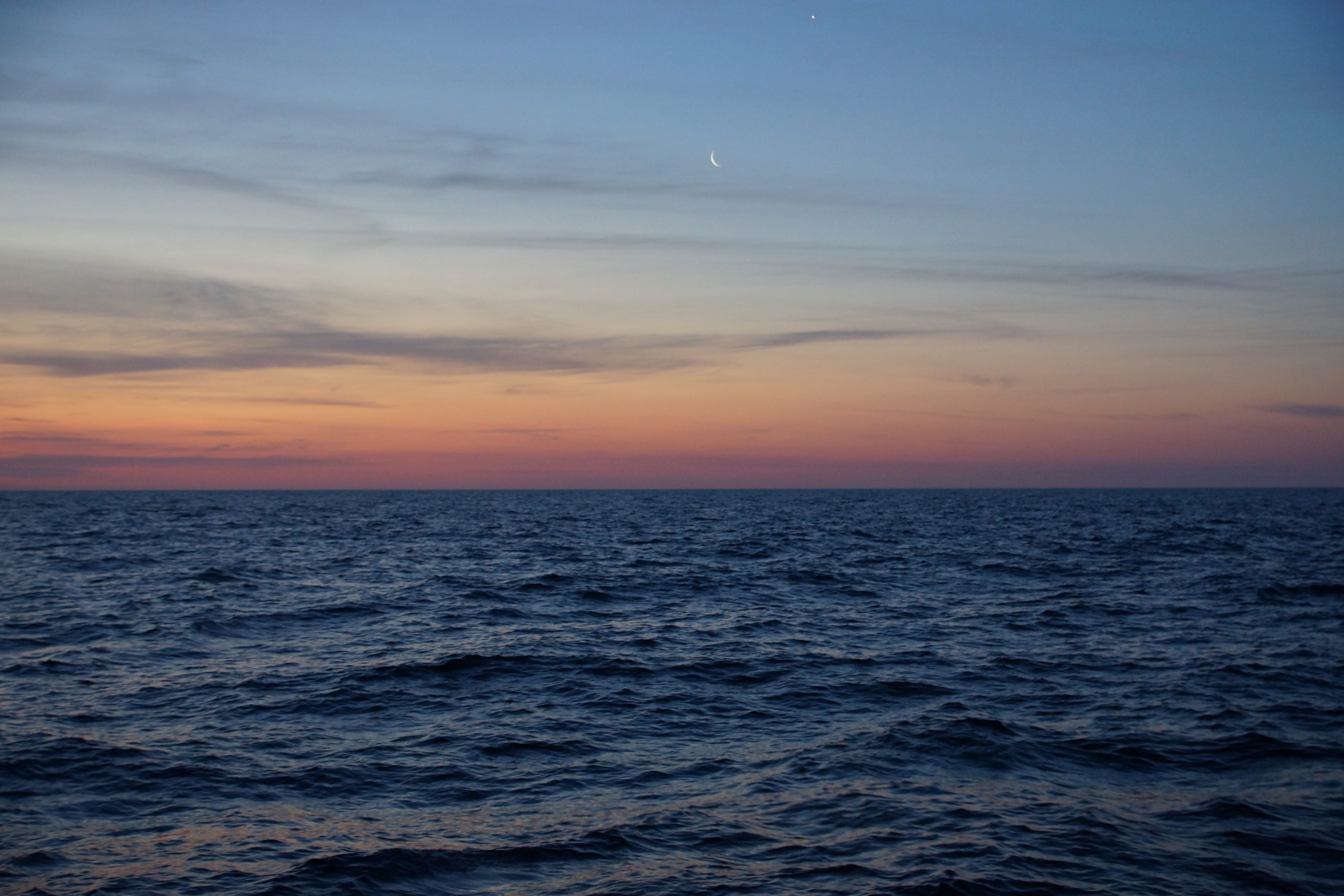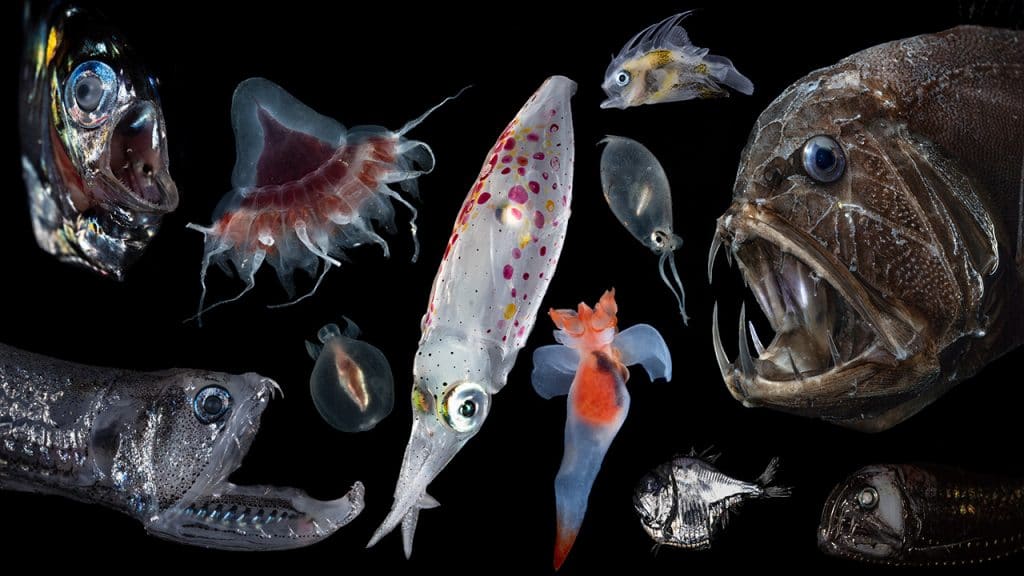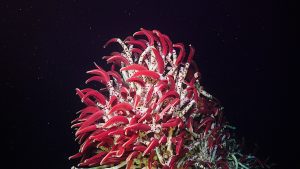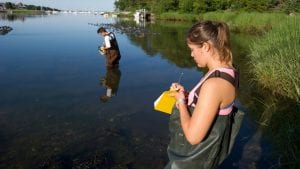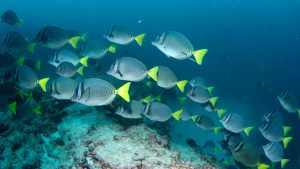With its sparkling expanse, spooky depths, and sweeping currents, the ocean is a world unto itself. Globally, the seas swell with 352 quintillion gallons of seawater. The ocean is so immense that all the countries on Earth could fit inside its waters.
From surface to seabed, the ocean is teeming with economic value: an abundant source of food, a reservoir of minerals, and an elemental force for climate stability. So — who owns this vast oceanic resource?
For much of human history, the high seas were traversed and fished freely by any nation under the presiding freedom of the seas doctrine. Coastal nations claimed territorial waters only three nautical miles from shore — the range of a cannon shot.
After World War II, many coastal nations began claiming access to 200 miles (321 kilometers) from their coasts to protect fisheries and natural resources. The discovery of rich mineral deposits and fossil fuel reserves underwater further drove national interests in securing exclusive dominion over the seabed.
In 1982, the United Nations Convention on the Law of the Sea introduced a new framework: the Exclusive Economic Zone (EEZ). This agreement gave coastal nations sovereign rights to explore, exploit, and conserve marine resources up to 200 nautical miles from their coasts. Today, around 160 nations maintain EEZs.
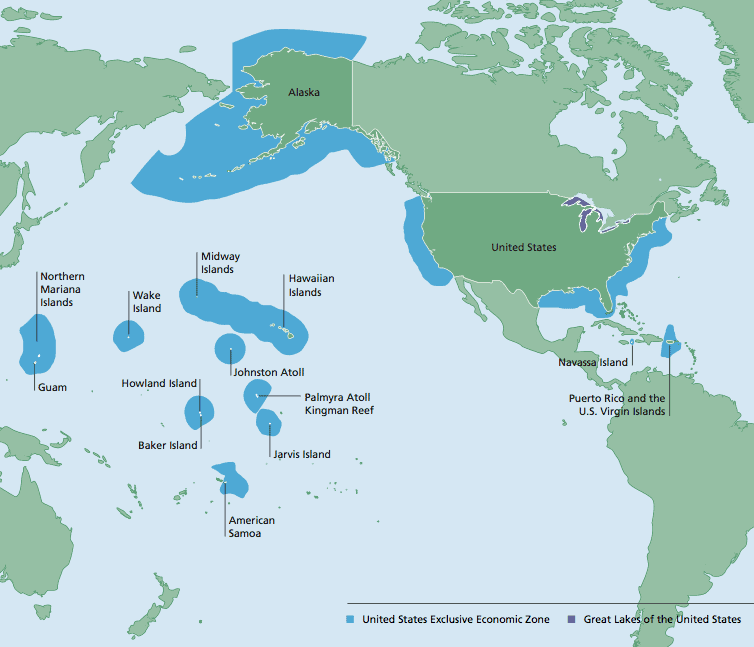
Dark blue areas on this map outline the Exclusive Economic Zone (EEZ) of the United States and affiliated islands. The U.S. EEZ is larger than its land area. (Courtesy of NOAA)
For the United States, the EEZ expanded its maritime domain to 4 million square miles - larger than the national landmass. It includes the waters off of the continental U.S. coasts, as well as around Alaska, Hawaii, and U.S. territories in the Pacific and Caribbean. This gives the U.S. one of the largest EEZs in the world, with both the right and responsibility to manage this resource sustainably.
Today, the U.S. EEZ is a hub of commercial and industrial activity. Numerous economic sectors are involved, including fisheries, transportation, military, tourism, mining, and energy development - including oil, gas, and offshore wind. This dynamic maritime economy supports approximately 3 million jobs, generates $129 billion in wages, and contributes over $300 billion annually to the U.S. economy.
From the coasts to deep sea, the U.S. EEZ is a living laboratory. Approximately 26% of the territory is designated as Marine Protected Areas (MPAs), which are more strictly managed to protect ecosystems and the genetic diversity of marine species. Across the vast domain of the EEZ, scientific researchers are studying ecosystems and ocean processes to inform sustainable fisheries, climate modeling, and biodiversity protection.
One area of scientific focus is the ocean’s mesopelagic “Twilight Zone,” which lies at midwater depths below the sunlit surface. This is a highly valuable region with an immense biomass and a critical role in carbon sequestration globally. Researchers are exploring dynamic food webs and massive fish populations to inform catch limits for emerging fisheries in this zone. Furthermore, scientists are urgently working to understand how to sustain this vital carbon pump for climate mitigation.
Yet much of the oceanic territory remains a mystery. To date, only 40% of the U.S. EEZ has been mapped. That’s where science plays a vital role. Ocean researchers are using cutting-edge technology to map the seafloor and gather data on ocean ecosystems.
To advance this work, scientists deploy sonar systems to capture detailed topographic data of the seabed, and autonomous underwater vehicles (AUVs) to explore deep-sea ecosystems. Research insights guide decision-makers on how to establish sustainable fisheries, manage mineral extraction, develop offshore wind, ensure safe navigation, and refine climate models.
Every salty drop of the ocean plays a role in creating a thriving marine food web and regulating the Earth’s carbon cycle. Through EEZs, coastal nations are now stewards of vast resources, with a profound opportunity to explore, enjoy, and enhance life on our watery planet.
learn more
Marine Protected Areas
Marine protected areas refers to any part of the ocean that receives some level of protection under...
Twilight Zone
The ocean twilight zone is a layer of water that stretches around the globe. It lies 200...
NOAA Ocean Exploration. How Big is the Pacific Ocean? https://oceanexplorer.noaa.gov/facts/pacific-size.html#:~:text=Covering%20more%20than%2030%20percent,of%20all%20the%20continents%20combined
National Parks Service. Ocean. https://www.nps.gov/places/000/ocean.htm#:~:text=All%20the%20world's%20oceans%20are,natural%20 feature%20on%20the%20planet
NOAA Office of Coast Survey. U.S. Maritime Limits & Boundaries https://nauticalcharts.noaa.gov/data/us-maritime-limits-and-boundaries.html
United Nations. United Nations Convention on the Law of the Sea of 10 December 1982. https://www.un.org/depts/los/convention_agreements/texts/unclos/unclos_e.pdf
USGS. Marine Minerals and Offshore Energy. https://www.usgs.gov/science/science-explorer/ocean/marine-minerals-and-offshore-energy
DOI. Interior Highlights Critical Mineral Prospects on the Seafloor.
NOAA Ocean Exploration. What is the “EEZ”? https://oceanexplorer.noaa.gov/facts/useez.html
WHOI. Report Reveals ‘Unseen’ Human Benefits from Ocean Twilight Zone.
WHOI. Can The Twilight Zone Be Fished Responsibly? https://www.whoi.edu/oceanus/feature/can-the-twilight-zone-be-fished-responsibly/
WHOI. Ocean Twilight Zone Role in Climate Change. https://www.whoi.edu/wp-content/uploads/2024/09/The-Ocean-Twilight-Zones-Role-in-Climate-Change.pdf
Federal Register. Ocean Mapping of the United States Exclusive Economic Zone and the Shoreline and Nearshore of Alaska. https://www.federalregister.gov/documents/2019/11/22/2019-25618/ocean-mapping-of-the-united-states-exclusive-economic-zone-and-the-shoreline-and-nearshore-of-alaska#:~:text=Section%201%20.,area%20of%20all%2050%20States.
NOAA. Marine Protected Areas. https://marineprotectedareas.noaa.gov/
WHOI. AUVs. https://www.whoi.edu/what-we-do/explore/underwater-vehicles/auvs/
